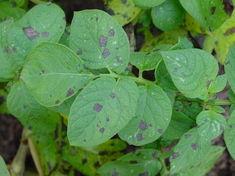
Growers of some key potato varieties will need to adapt fungicide programmes this year to protect crops against Alternaria as well as late blight, according to experts.
Alternaria, which causes symptoms commonly known as early blight, has become an increasing problem over the last two years according to Neil Thompson, product manager for potato fungicides at Bayer CropScience.
He attributes this to the growing popularity of more susceptible varieties and changes in fungicide use. He said: “Limitation of mancozeb use has contributed and there’s been a knock-on effect from the development of more aggressive Late blight strains. Recently introduced fungicides tackle them very effectively but have little or no Alternaria activity.”
So far, the variety Markies has been worst affected while Saturna and Maris Piper have shown susceptibility too and although disease outbreaks have generally been seen from late July onwards, primary infection can be spotted much earlier.
Thompson adds: “Initial symptoms can be found two to four weeks from emergence on older leaves lower down plants. Look for irregular shaped dark brown to black spots. These develop into characteristic ‘target spot’ lesions, with dark concentric rings surrounded by a chlorotic halo.”
Agrovista technical manager Dr Mark Palmer advises adaptation of fungicide programmes for susceptible varieties to build in early protection against this primary infection.
He said: “The key thing is to keep ahead of Alternaria risk by using protectant products with dual activity against Alternaria and Late blight. [Consento] is the most appropriate product to use during the rapid canopy growth phase. Its propamocarb component provides well-proven systemic mobility needed to protect new growth against Late blight while its fenamidone component adds good Alternaria activity.”



